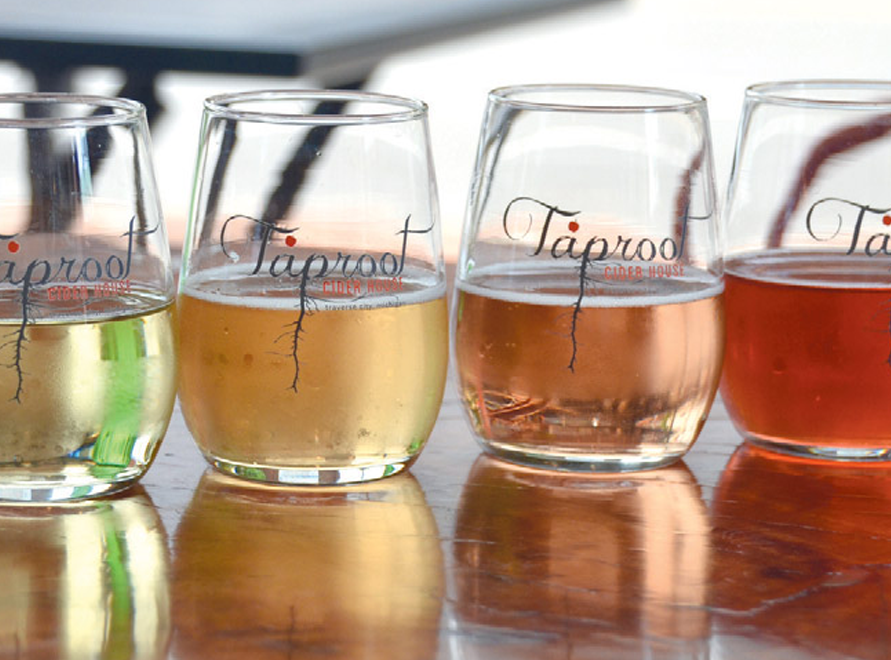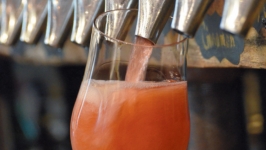Hard Facts on (Hard) Cider Styles
As Doug Mathias of Chateau Fontaine once said to Jen, “Cider is made like wine but drunk like beer.”
With taps for 17 Michigan ciders, all chosen for their quality and reflection of the region, Jen and the Taproot staff enjoy sharing stories about the farmers, apple varieties and styles. They take their mission of finding the perfect cider for each client’s palate seriously. FYI: Cider is gluten free.
THE STANDARD STYLES:
New World Cider—primarily from culinary/table apples, generally lower in tannin and higher in acidity. Refreshing, not too cloying or austere.
New World/Heritage—primarily from multi-use or cider-specific bittersweet/bittersharp apples, sometimes wild or crab apples for acidity/tannin balance.
English Cider—bittersweet and bittersharp varieties cultivated for cider, traditionally fermented, aged in older wood barrels. Rarely an overly apple character, due to malolactic fermentation. Dry, fullbodied, austere.
French Cider—Normandy styles, from bittersweet and bittersharp apples cultivated for cider. Fruity character and aroma, tends to a rich fullness, spicysmoky, typically a touch sweet to offset apple tannins.
Spanish Cider—traditionally made with sharp and semi-sharp apples, wild yeast fermentation, contact with chestnut barrels or stainless steel tanks, as with the English and French ciders, both alcoholic and malolactic fermentation. Typically fresh, citric and floral aromas, lively acidity.
SPECIALTY STYLES:
New England Cider—characteristic New England apples with high acidity, occasional additions to raise alcohol and contribute flavor notes. Substantial body and character, relatively dry, sometimes sweet if in balance.
Fruit Cider—made with other fruits or fruit juices. Like a white wine with complex flavors, the apple character blends with the added fruit, optimally a balance of the two.
Apple Wine—made with white wine in mind, sugar is added to increase alcoholic potential. Can be dry to sweet, still to carbonated, ideally balanced with low astringency and bitterness.
Hopped/Herbal Cider—cider with any combination of botanicals including hops, lemongrass, herbal tea blends, etc. May give the impression of a white wine with complex flavors, a balance of apple married to the botanicals.
Spiced Cider—cider with any combination of spices added including cinnamon, cloves, ginger, allspice, etc.
Wood-Aged Cider—cider aged in barrels. Barrels can be new or previously used for spirits. Thus the wood character can be more obvious or more subtle depending on the cidery’s choices.
Notes adapted from the Style Guidelines for the Great Lakes International Cider and Perry Competition.






